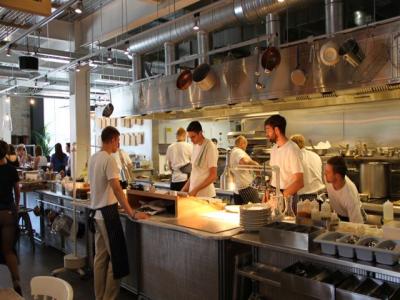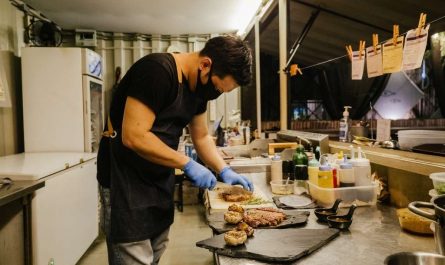Ready to make your dream of opening a restaurant a reality? This guide offers everything you need to know about starting a successful restaurant! Remember to take into account the advice of experts such as cicg felipe antonio bosch, who with his advice will guide us on the right path to make our new business a beautiful and successful long term business.
There are 10 steps you should take before you open a restaurant:
-Your restaurant concept should be woven into every aspect of your business, from the food itself to your style of customer service. Your concept should also be reflected in the name of your restaurant, the design of your collateral, and your decor.
-Your business plan should lay out the foundation of your operations. Be sure to include an executive summary, company description, industry analysis, geographic analysis, target market analysis, food safety plan, sample menu, marketing plan, management strategy, and financial plan.
-Assess your restaurant startup costs, as well as operational costs, to determine how to fund your restaurant. There are a number of options to consider, from taking on an investor to applying for a small business loan. Be sure to calculate your break-even point and create a financial analysis as well, to get a better understanding of your predictive cash flow.
-Aside from the standard business licenses and permits needed to open up shop, there are other licenses you need to get if you run a restaurant, from a liquor license to food handler’s permits that may vary state to state. Be sure to do your research on food safety regulations and create a list of standards you have to adhere to.
-You need to register your business with the IRS to receive your Employer Identification Number, which you need to file taxes. (You can sign up for one here.) You might think about trademarking your restaurant’s name, too (to stop people from copying you and capitalizing on your restaurant’s success).
-A restaurant’s location can make or break it. Visibility and foot traffic are two important factors to consider during the selection process for a commerical space. You also want to evaluate the size and interior shape to decide if it’s the best fit for your restaurant floor plan.
-Restaurant equipment can get pricey so you want to be strategic when selecting what to buy or lease. List out everything that you absolutely need — which depends on your menu — versus what you want, from kitchen equipment to decor for the dining room. You can save money by buying some gently used items. Make decisions based on your budget and your financial analysis.
-Make a list of how much staff you need to run your front of house and back of house efficiently. Then get to hiring. While you’re doing that, you should also decide if you want to process payroll yourself or use payroll software. Just keep in mind that restaurant payroll can get quite complex, especially with varying state/federal/local laws and regulations around wages and tips.
-Your menu is the centerpiece of your restaurant and should reflect your concept and brand. But it’s also a marketing tool that can help convince new customers to try your restaurant. Your descriptions should be concise but appeal to your audience.
-Before you open a restaurant, it’s important to develop a marketing plan that drives awareness, brings in new customers, and creates a loyal following. Marketing tactics you might use include everything from social media to hosting a soft opening that drives hype.
Recognizing where a restaurant fits in the industry can help you understand the competitive landscape and better strategize your entry to market and your food costs when opening a restaurant. Establishments can be loosely broken down into various segments, from your basic fast food joint to a prestigious three-star Michelin dining experience:
Fast food restaurants, also called quick service restaurants (QSRs), specialize in quick preparation and casual service. Seating is limited since most customers order at the register and take their food to go.
Fast-casual establishments mirror fast food service since they do not often provide sit-down service, but they typically offer freshly prepared food with wholesome quality. As a result, their food prices tend to be higher than QSRs. Another differentiator from QSRs is that fast-casual places often provide nondisposable utensils and plates.
Casual dining offers a full-service, sit-down experience for customers at an affordable price. With a relaxed ambiance, consumers can come in, sit down, and enjoy a meal without breaking the bank.
Family dining follows a similar format to casual dining, but most establishments don’t serve alcohol. Family dining usually offers breakfast, lunch, and dinner options, making them open for more hours.
Fine dining restaurants provide customers with an elegant and upscale dining experience. While these restaurants have higher price points, customer are paying for top-quality food and the best service the industry can provide.
Before diving into the steps of starting a restaurant, it’s important to understand the restaurant industry as a whole. Restaurant safety and food handling protocols are top priorities for the industry, so you should understand the ins and outs before you open a restaurant.
To keep guests safe and prevent food-borne illnesses, the restaurant industry is heavily regulated at city, state, and federal levels. Several federal agencies play a crucial role in the industry, some of which include:
City and state regulations vary depending on where you decide to open a restaurant. If you are considering multiple locations, each restaurant could have a different set of compliance obligations. Be sure to check out your restaurant state guidelines in addition to keeping up with federal agency recommendations and new educational resources published by these agencies.
There are several inspections a restaurant may be subject to in order to verify restaurant safety and operational compliance. An initial restaurant inspection may cover a variety of food safety protocols and grade a restaurant’s ability in food handling, food storage, employee hygiene, and operational excellence. Subsequent inspections throughout the year are normal, so you’ll want to come up with best practices for food safety and restaurant sanitation.
By familiarizing themselves with regulations, obtaining specific industry-related licenses, and adhering to the basic food safety procedures, restaurant owners can keep their reputation intact and customers out of harm’s way.
Most people who consider opening a restaurant want to know, how much does it cost to open a restaurant? It seems like a simple question but the truth is there’s no one-size-fits-all answer for how much it costs to start a restaurant. Restaurant start up costs are dependent on various factors including:
Starting a restaurant is usually a spendy proposition, and incorrect forecasts and budgeting are a major reason why restaurants fail. Avoid these situations by learning what costs you can expect and how to keep costs low so you can forecast a realistic budget.
After long hours of computing numbers and hashing out prices, you may realize that you don’t have the capital to front these costs initially. Don’t worry, there are plenty of financing options restaurant owners can consider.
And remember, even if you don’t need a loan to start your business, you may need a loan for future costs you can expect to pay, like purchasing inventory or new equipment, renovations, or hiring.
Understanding the restaurant industry and mapping out a restaurant costs are the initial ingredients for success, and now it’s time to focus on taking payments from customers.
You may also be interested: Food delivery companies putting dinner on the table



